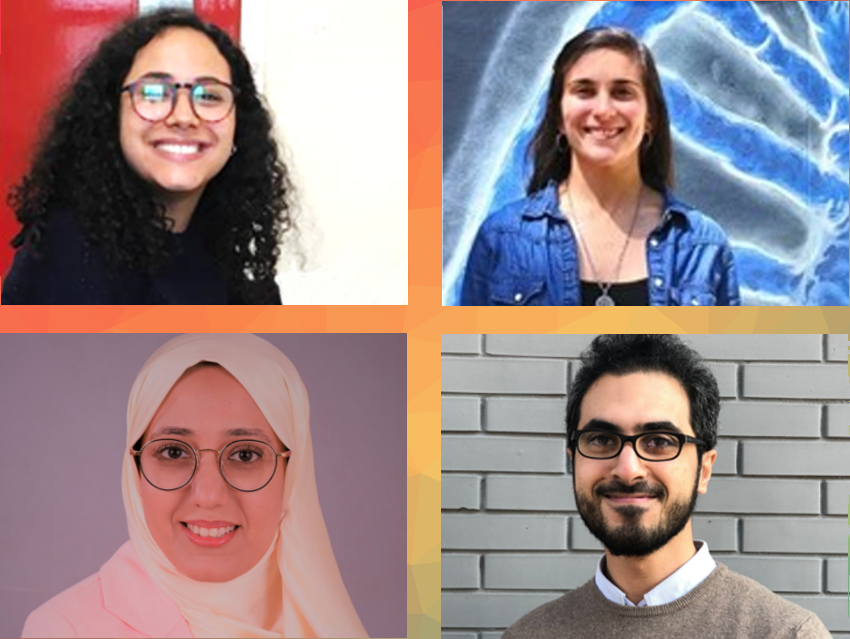This year, the International Younger Chemists Network (IYCN) announced its second annual experimental competition for public outreach in chemistry. The winners were Soledad Martinez and Adalgisa Martinez-Silveira, both from the Universidad de la República in Uruguay. With their contribution, they visualized the production of CO2 by yeast in combination with sugar and showed how this acidifies aqueous solutions. They proposed several ways to adapt their experiment, such as different sources of sugar and different preparations of the carbon-based indicator. Furthermore, their experiment can be performed without use of a laboratory.
Below, Hossny Ismail and Shaimaa Goher from the IYCN public outreach committee speak to the winners for ChemistryViews about their motivation for chemistry public outreach, the impact of COVID-19 on chemical education, and their personal careers and experiences in Uruguay.
First of all, congratulations on winning the IYCN public outreach 2nd annual “Engaging the Next Generation” competition with your submission entitled “Detection of the production of CO2 by Saccharomyces cerevisiae during sugar fermentation and preparation of acid–base indicator”. What motivated you to participate in this competition?
Soledad: For several years we have been supporting projects that link chemistry with society. We love the idea of being able to transfer knowledge from the laboratory into everyday life and by doing so we can all get closer to science.
Adalgisa: The possibility of relating everyday processes to chemistry promotes its demystification and arouses curiosity, not only to attract future scientists but also to make our work understandable to the general public and explain the phenomena that are happening around us.
Soledad and Adalgisa, could you tell us a bit more about yourselves?
Soledad: My name is Soledad Martínez and I am a 27-year-old Ph.D. student. I was born in a city on the east coast of Uruguay, a small country in South America. I have always been really curious and creative. When I was 12 years old, I decided that all I wanted was to study chemistry. So, when I was 17 years old, I participated in the Chemistry Olympics and then I moved to Montevideo, the capital city of Uruguay, to start my degree in clinical biochemistry. Since 2015, I have been working in the microbiology area of the Faculty of Chemistry at the University of the Republic, where I am carrying out my Ph.D. research on the quality and safety of drinking water. I also love painting and drawing, so that is what I do when I am not filtering water.
Adalgisa: My name is Adalgisa Martínez-Silveira and I work as a teacher and researcher at the Chemistry Faculty of Udelar [the University of the Republic in Montevideo]. Early this year I finished my Ph.D. in chemistry, through which I studied an alternative raw material for biodiesel production. Right now, I have joined a research group on drinking water quality. I am 31 years old and I am from Uruguay. Actually, I was born in Brazil but I lived my whole life in Uruguay. I graduated from clinical biochemistry and I have worked in microbiology since 2010. I am happily married to a chemist. I also love to do CrossFit training and cats are my weakness.
When and how did you develop an interest in chemistry?
Soledad: I have been interested in chemistry since I started my secondary education. My mother was working in a lab at this time and I was really curious about that. So one day after talking with her I decided I wanted to be a chemist.
Adalgisa: My interest in chemistry started when I was in high school. During this time I had a teacher who conveyed his passion for chemistry to me. Thanks to him I knew and understood what research in chemistry implied and it was from that moment that I decided that I wanted to be a scientist.
Could you briefly describe your experiment?
Adalgisa: First, we extracted the pigment that gives the characteristic color to purple cabbage with the aim of using it as a pH indicator. After that, we produced CO2 gas using the yeast Saccharomyces cerevisiae. This microorganism produces CO2 during sugar fermentation. Finally, using the cabbage pigment, we detect the CO2 produced by S. cerevisiae through the change of color resulting from the acidification of the aqueous solution.
With this experiment we pretend to simulate what happens in the ocean with the dissolution of the atmospheric CO2; its increase in the last few years has produced the acidification of oceans.
What challenges did you face while preparing for your experiment?
Soledad: The biggest challenge we encountered was not being able to use the infrastructure and materials of the laboratory in which we work due to the fact that the university remained closed during the contest owing to the COVID-19 pandemic. However, this disadvantage turned in our favor as we managed to carry out the experiment with materials that we could easily find in our kitchens and in the grocery store.
What are the key takeaways or learning objectives from your experiment? What does this experiment demonstrate best?
Soledad: CO2 is produced naturally by respiration and fermentation or by anthropogenic activities such as combustion of wood and other organic materials and fossil fuels such as coal, peat, oil, and natural gas. CO2 is released into the atmosphere, but generally we cannot see it since it is a colorless gas.
Through our experiment we can observe the natural production of gas by living organisms – in our case by Saccharomyces cerevisiae yeasts – when the balloon is inflated or by the bubbles in the cabbage juice solution.
With the increase in the concentration of CO2 in the atmosphere in recent years, due to anthropogenic emissions and deforestation, the oceans have become more acidic. Similar to the experiment carried out here, the CO2 produced is dissolved into the water. This leads to its acidification, which we can see in the experiment with the color change of the cabbage pH indicator.
What does the award mean to you?
Adalgisa: This recognition is very important to us, because it encourages us to continue on this path. Many times in academic life we feel frustrated or discouraged, because not everything goes according to plan. Being recognized internationally with this award gives us great satisfaction.
In conjunction with the 50th anniversary of Earth Day, what message would you like to deliver to chemistry stakeholders in government, industry, and academia?
Soledad: We believe that the support of the various stakeholders involved is very important to continue investing in research in chemistry. More than ever, sufficient investments must be made to maintain and increase the capacity of science to respond to ever more numerous and complex problems. We believe that science is an essential tool for a sustainable and future-proof development of the world and its inhabitants.
In your opinion, how could the COVID-19 pandemic affect chemical education?
Adalgisa: In our opinion, the pandemic has had an impact on chemistry teaching, especially because it is a science that requires experimentation to promote understanding. The fact that students cannot attend the laboratories in a normal way affects the quality of their education, reducing the opportunities for manipulation, a part that is fundamental for a chemistry student. Many of the laboratory activities had to be adapted due to social distancing, thereby diminishing opportunities for discussion of the laboratory activities by students.
What role do you think science communication plays in society and what do you like the most about it?
Soledad: We believe that the development of science and its communication in a broad sense are key to building a more critical and just society, focused on citizen participation. Good communication can help science to be more popular, more understandable and tangible, and therefore, to promote a culture where knowledge and innovation are sources of sustainable development.
It is also the start of a way of knowing the world that promotes critical thinking and provides us with tools in the face of uncertainty. Hence, the importance of popularizing science: to democratize information and bring knowledge closer to a wide public; building bridges between the scientific community and citizens. What we like the most is being able to awaken the interest in science in other people.
How do you see the global representation of women in science? What message do you have for young girls in STEM or those considering a STEM study choice?
Adalgisa: Considering that less than one-third of the world’s researchers are women, it is necessary to determine which specific factors are shaping women’s decisions to pursue STEM careers and which ones create a glass ceiling that prevents them from achieving important positions, in order to improve gender policies at the national, regional and global levels.
Soledad: Several studies demonstrate that women in STEM fields publish less, are paid less for their research, and do not progress as far as men in their careers, especially women between 30-40 years old, the same age range that is most probable for having children. This point is not considered when conducting the academic evaluation of researchers, thereby skewing the concept of equity.
Science and gender equality are vital to the world reaching sustainable development goals, so we always try to encourage girls to do science. With this in mind, some scientists recently developed several projects that promote science between young girls in our country, bringing them closer to the labs and showing them the projects on which Uruguayan women researchers work.
Have you faced any challenges pursuing a career in science?
Soledad: The biggest problem in pursuing a career as a researcher in Uruguay is economics. To understand the challenge of dedicating yourself to science and technology in our country, it is important to highlight that Uruguay is one of the Latin American countries that invests the least in this area in relation to their GDP (0.36 %), below Argentina, Brazil, Cuba, Mexico, Peru, Ecuador, and Venezuela, some of which allocate eight times more funding.
How have you managed to balance your work and your personal lives?
Adalgisa: It is the hardest part. While doing my Ph.D. it was very difficult for me to find time for my personal life. Now I try to set more limits so that I don’t spend all of my day working. For example, now I include my personal commitments as one more task in my day.
Soledad: Combining work and a personal life is really hard. I live alone and far away from my family so I need to manage to do all the chores, work and everything else. Now I’m carrying out my Ph.D. research and also working as an analyst at the drinking water microbiology lab, so I spend several hours working. I commute by bike to do some exercise because I couldn’t fit time to exercise in my schedule. I also try not to work on the weekends but instead visit my family or friends, or just stay at home painting.
How do you see your career evolving in the upcoming ten years?
Adalgisa: I would like to have my own research line where I can perform as an independent researcher.
Soledad: I hope I have my Ph.D. degree in three or four years. After that I would like to do some research abroad. I am really keen on bioinformatics so I hope I will have developed into that area by then.
What role did mentorship play in your careers so far? Have you had any role models?
Adalgisa: My mentors have helped me to think critically and work independently, always pushing me to improve myself.
Soledad: In my opinion the mentors play, if not the most, almost the most significant role in our career. It is really important to have a good relationship with them to work together, always learning from each other. Both of my mentors are easygoing people who push me to keep going and believe in me even when I think my work is not good enough. Now Ada is also someone who I consider a mentor, and she is that way also.
What do you like to do when you are not doing research?
Adalgisa: In my free time I like to do CrossFit training because it helps me clear my mind and I also like to be outdoors. During the quarantine with my husband, who is also a chemist, we began to make leather crafts. We liked this activity very much and it has become our hobby.
Soledad: I love painting, so I am always trying new techniques, shapes and colors. I am also into yoga because it helps me with concentration and relaxation, so I practice it whenever I can.
Thank you very much for the interview.
Reference
[1] Marilia Valli, Gabriela Tormet-Gonzalez, Winning submission of the 2nd annual IYCN Public Outreach Competition, October 3, 2020.
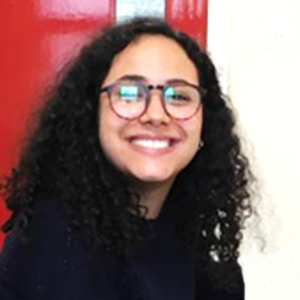 |
Soledad Martínez, born 1993 in Uruguay, studied clinical biochemistry at Universidad de la República, Montevideo, Uruguay. Since 2015, she has been studying her Ph.D. in microbiology at the same university. Her research focuses on the quality and safety of drinking water using molecular and bioinformatics techniques. |
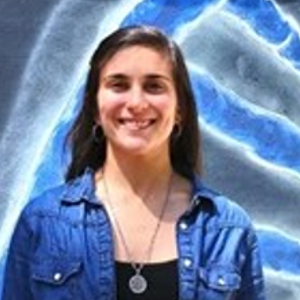 |
Adalgisa Martínez-Silveira, born 1989 in Brazil, studied clinical biochemistry at the Universidad de la República, Montevideo, Uruguay, and earned her Ph.D. there in microbiology in 2020. Currently, she works as a professor and researcher at the Faculty of Chemistry of Universidad de la República. Her research focusses on the quality of drinking water. |
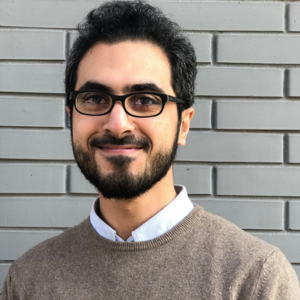 |
Hossny Ismail studied chemistry at Alexandria University, Egypt, University of Genoa, Italy, Uniwersytet im. Adama Mickiewicza w Poznaniu, Poznań, Poland, and Paris-Sud University (Paris XI), France. Currently, he is a Technical Service & Application Development Engineer at Dow Chemical Company, Cairo, Egypt. |
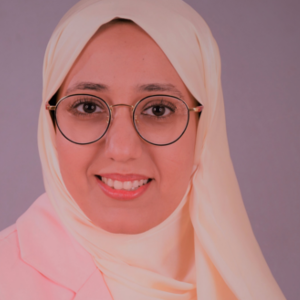 |
Shaimaa Goher studied chemistry at Benha University, Egypt. From 2013 to 2018 she was a Research Assistant at Benah University. Since July 2020, she has been an Assistant Researcher at Nanotechnology Research Centre (NTRC) of The British University in Egypt (BUE), Cairo. |
